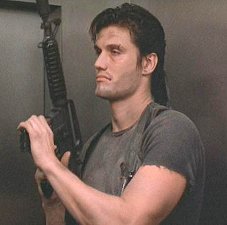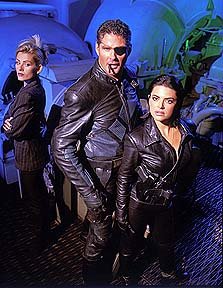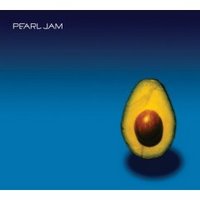Once upon a time there were some comic book artists who were dissatisfied that they didn’t own their own work, and so they created a new comic book publishing company called Image, with the aim of operating quite differently than the big two publishers. The industry and fans alike were eager to see just what new characters and stories Image would put out. Tragedy struck however when a MOTS Bomb hit Image HQ and killed most of the artists’ imaginations, and their output turned out to just be More Of The Same. In a strange twist, however, the bomb did manage to mutate some artists’ works in strange and wonderful ways, a la the Incredible Hulk. One of those artists was Sam Kieth, creator of The Maxx.
Once upon around the same time there was a music video station called MTV. If you’re confused, it is indeed technically the same network you know today. Back then the M stood for “music” and not “My Super Sweet 16.” Well the early to mid 1990s were the transition years from what the network was to what the network would become. And those of a younger generation must forgive us, those who were around to stop it. We didn’t know. For at the time, MTV was something of an innovator, even in the realm of non-music programming. Beavis and Butt-head, Liquid Television, Aeon Flux, The Head. For a short period of time, experimental animation had a small heyday on MTV. And chief among these creative successes, I would argue, is the animated adaptation of The Maxx.
Now that I’ve ended three successive paragraphs with the words “The Maxx” I think it’s finally time to delve a bit into the series, which covers only a part of the comic’s scope. The Maxx lives in two worlds, as a homeless man with delusions of superhero-dom in our real world, and as a genuine superhero in an alternate world called The Outback, a wilderness of grassland and strange and savage beasts. His experiences are intimately linked to those of a traumatized freelance social worker named Julie, who also escapes into The Outback to become the fierce and self-reliant Leopard Queen. The sinister Mr. Gone creeps everyone out in both dimensions, while his henchman the black Isz (I'm not usre how to pluralize that), docile and white in The Outback, cause havoc when they transition into the real world. Sarah, a depressed teenager, also has surprising connections to everyone involved.
Now I don’t want to push this into summary, both to avoid spoilers for those who haven’t seen it and to avoid sounding like a wikipedia entry, but I should make mention of a few things. The story gets weird, very weird. It’s in large part a psychological exercise about how some people deal with severe trauma, consciously and subconsciously. The pacing is expert, with shifts in mood and tone that never jar except when they’re supposed to. It’s alternately funny, violent, severe, and melancholy, and often enough a surreal combination of them all. The animation is beautiful, with strong nods to its comic book origins in drawing style and in the way it portrays motion. This is one of the first cartoons I ever saw that used layers of moving flat panels to show both 2- and 3-dimensionality simultaneously. There are moments of creative playfulness that delight no matter the tone of the scene, often when the characters transition between worlds, and particularly an episode where a shrunken down Maxx must navigate his way through Julie’s apartment to avoid a hungry Isz.
The Maxx is not on DVD, sadly, and there’s no telling if it ever will be. It was released on VHS years ago, in an apparently slightly edited version (?), so finding that might be the best chance you ever get for a hard copy. That said, do not shed tears you Princes of Maine, you Kings of New England, for there is a youtube archive! Though the only way to find it is to pass through the Orcan Hills, across the Valley of Trolls, and beyond the Leech Swamp. Lucky for you, I’ve already made that journey, and the URL is: http://youtube.com/profile_videos?user=electricshocktherapy .










